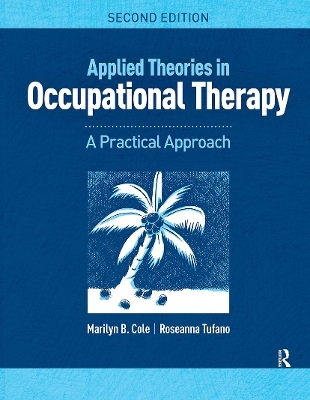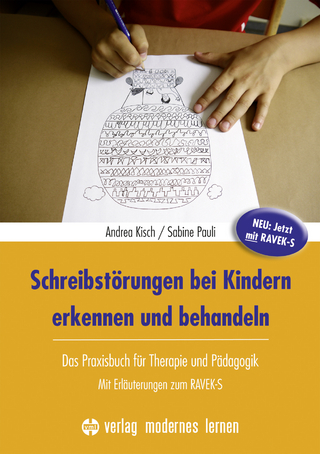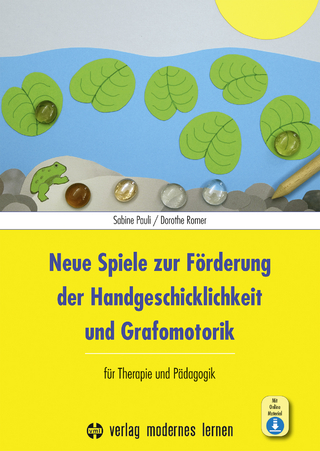
Applied Theories in Occupational Therapy
SLACK Incorporated (Verlag)
978-1-61711-636-0 (ISBN)
Applied Theories in Occupational Therapy: A Practical Approach, Second Edition offers practical templates to help readers learn the key constructs of each theory and assimilate knowledge based on Mosey’s organizational structure. Each theory-based chapter is designed for ease in gathering content knowledge and comparing theories in a distinctive manner. The book includes:
Summaries of the current trends found in practice, along with external influential models of health and wellness impacting populations of concern
Exploration of some of the most common occupation-based models around the world. Each model’s holistic conceptual nature is described, including theoretical assumptions and practice guidelines for evaluation and intervention
Reviews of common frames of reference found in evidence-based practice, which address the secondary and tertiary needs of common populations
In this Edition, learning activities and case-based analyses strengthen the application of theory into current practice contexts. Practical guidelines assist the reader in formulating an evaluation process and determining the relevant intervention strategies that promote occupational participation, engagement, and functioning across the lifespan and the continuum of health.
Included with the text are online supplemental materials for faculty use in the classroom.
Marilyn B. (Marli) Cole, MS, OTR/L, FAOTA, is an occupational therapy Professor Emerita at Quinnipiac University in Hamden, Connecticut. She is the author of Group Dynamics in Occupational Therapy, now in its fifth edition (SLACK Incorporated, 2018). Marli also coauthored textbooks on social participation (with Mary Donohue, 2011) and productive aging (with Karen Macdonald, 2015) and coedited Global Perspectives in Professional Reasoning (with Jennifer Creek, 2016), all published by SLACK Incorporated. A graduate of University of Pennsylvania, she practiced for 16 years in mental health, pediatrics, and geriatrics. She holds an advanced certification in sensory integration and has published chapters on theory development, client-centered groups, occupational therapy in retirement, volunteering, end of life, theories of aging, and occupational therapy in the third age (retirement). As an educator, she taught courses in therapeutic use of self, group leadership, frames of reference, psychopathology, geriatrics, group dynamics, evaluation, intervention, health conditions, problem-based learning, and research. As a fieldwork I coordinator, she developed student experiences in the United States, England, Costa Rica, and Australia. In 2011, she guest-edited a special edition of Occupational Therapy International on occupational therapy in the third age. Marli regularly presents at professional conferences, including the American Occupational Therapy Association (AOTA), the World Federation of Occupational Therapy, the Geriatric Society of America (GSA), and the International Positive Psychology Association (IPPA). At home in Stratford, Connecticut or Freeport, Bahamas, Marli and husband Martin Schiraldi enjoy traveling, cruising, sailing, hiking, biking, snorkeling, and fostering rescue dogs. Roseanna Tufano, LMFT, OTR/L, is a Clinical Professor of Occupational Therapy at Quinnipiac University. Since graduating with an occupational therapy degree in 1980, she has worked along a continuum of mental health services. Her teaching career at Quinnipiac University began in 1984, and she has taught courses primarily in occupational therapy theory development, health conditions/psychopathology, group dynamics, clinical reasoning, psychosocial adaptation to physical disorders, and mental health assessments and interventions across the lifespan. She has published several chapters on related topics and has presented locally and nationally for 3 decades. With her advanced degree in family therapy, Roseanna joins her husband Lou in a private practice called Enduring Families conducting individual, couple, marital, and family therapy. She recently served a 6-year term as Chair of the Board for a nonprofit mental health agency. Within the Quinnipiac University community, she advises and engages actively with students and has received several awards. Roseanna has been an invited motivational speaker for various student activities, including the Freshman Address at the University Convocation, where her daughter, Carissa, sat among the incoming class of 2006. Roseanna and Lou enjoy traveling, dancing, and spending family time with adult children Carissa and Brett, who were both married in 2017.
Dedication v About the Authors ix Preface xi Section I: Applied Theories of Health and Wellness Chapter 1. Current Trends: Occupational Therapy's Visions for the Future The American Occupational Therapy Association's Centennial Visions Trends From the Slagle Lectures and AOTA's Official Documents The Evolution of Occupational Therapy Paradigm Shifts in 20th Century Occupational Therapy Theoretical History of Occupational Therapy Learning Activities Chapter 2. Models of Health and Wellness The Medical Approach to Continuums of Care The Biopsychosocial Model A Global Perspective: The World Health Organization's Model The Recovery Model in Mental Health A Client-Centered Model of Health Care Public Health Models of Health Care Wilcock's Occupational Perspective of Health Learning Activities Chapter 3. The New Paradigm of Occupation Occupation as a Core Concept Systems Theory Social Cognitive Theory Future Directions for Occupational Therapy Learning Activities Chapter 4. Organization of Theory in Occupational Therapy What Is Theory? Levels of Theory Contributions of Occupational Science Occupation-Based Models Frames of Reference How to Evaluate Models and Frames of Reference Learning Activities Section II: Occupation-Based Models Chapter 5. Occupational Behavior Chapter 6. Model of Human Occupation Chapter 7. The Person–Environment–Occupation–Performance Model Chapter 8. Occupational Adaptation Chapter 9. Ecology of Human Performance Chapter 10. International Models: Person–Environment–Occupation, Canadian Model of Occupational Performance, and Japanese Kawa Chapter 11. Model Integration Section III: Frames of Reference Chapter 12. Applied Behavioral Frames Chapter 13. Cognitive Behavioral Frames Chapter 14. Social Cognition and Third Wave Cognitive Frames of Reference Chapter 15. Biomechanical and Rehabilitative Frames Chapter 16. Allen's Cognitive Levels Frame of Reference Chapter 17. Toglia's Dynamic Interactional Approach Chapter 18. Ayres' Sensory Integration Frame Chapter 19. Sensory Motor and Processing Frames Chapter 20. Motor Control Frames Chapter 21. Motor Learning and Task-Oriented Frames Chapter 22. Psychoanalytic Frames Chapter 23. Psychodynamic–Ego-Adaptive Frames Chapter 24. Frames of Reference Integration Appendix 1. Theories of Lifespan Development Appendix 2. An Existential/Humanistic Approach Index
| Erscheinungsdatum | 23.12.2019 |
|---|---|
| Sprache | englisch |
| Maße | 216 x 279 mm |
| Gewicht | 1000 g |
| Themenwelt | Medizin / Pharmazie ► Physiotherapie / Ergotherapie ► Ergotherapie |
| ISBN-10 | 1-61711-636-X / 161711636X |
| ISBN-13 | 978-1-61711-636-0 / 9781617116360 |
| Zustand | Neuware |
| Haben Sie eine Frage zum Produkt? |
aus dem Bereich


